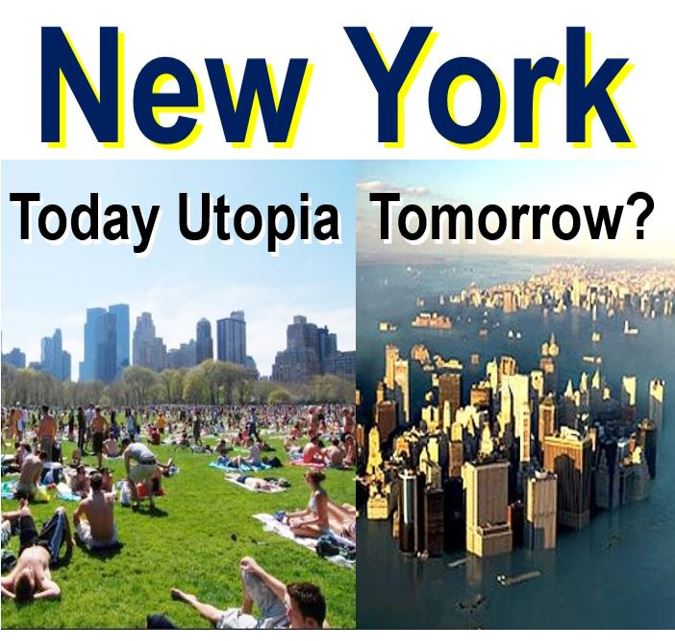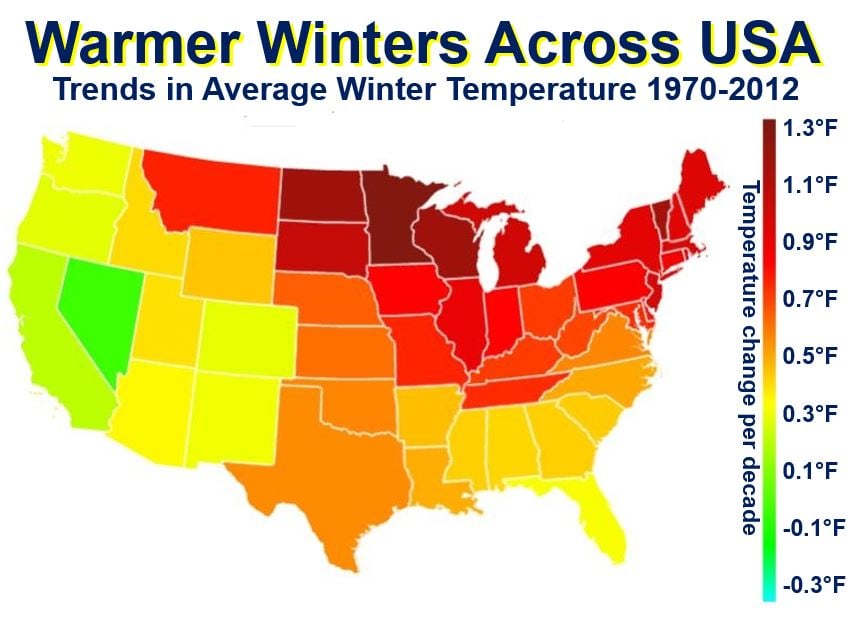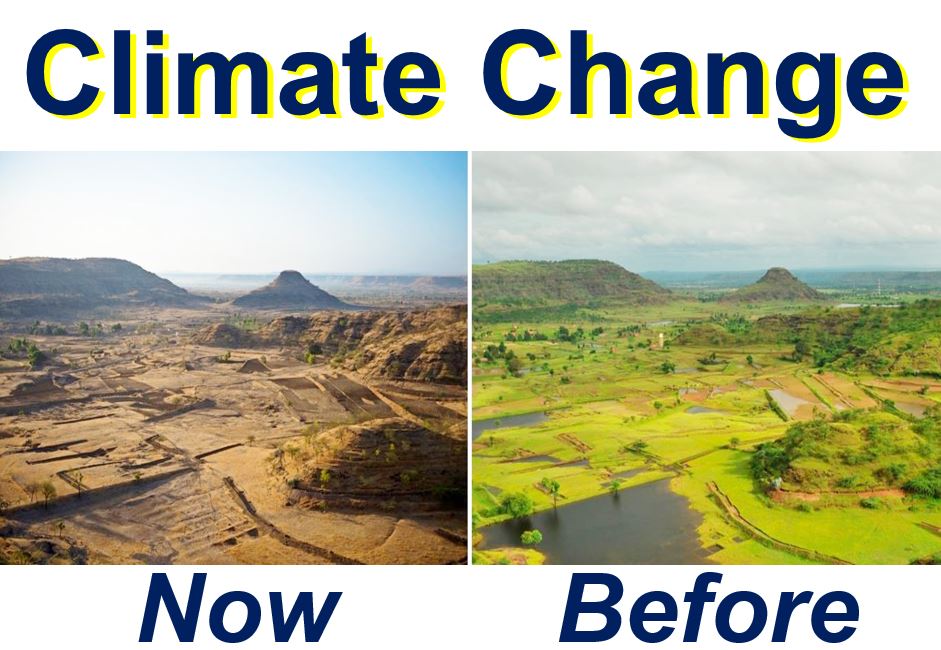Climate change has brought milder weather, more pleasant temperatures and an overall year-round environment that makes us happier – so happy, however, that we risk becoming complacent and forgetting all about the dangers that global warming represents over the long term. The problem is – by the time we wake up and face reality, it could be too late.
It is human nature to forget about perils and potentially unpleasant future events when times are good. We need to wake up now, say two scientists from New York University and Duke University, who warn that even though weather conditions have improved, things will get considerably worse over the course of the coming century.
Tragically, the researchers wrote in the journal Nature (citation below), the climate downturn and all the horrible things it will bring – such as rising sea levels which will make many cities across the world uninhabitable – may come too late to spur demands for effective policy responses to address global warming.
 New Yorkers enjoying the summer in Central Park (left). Our weather has been getting progressively more pleasant since the 1970s, with warmer winters, and less humid summers. All this is making us forget what may come by the end of this century – e.g. New York flooded with seawater – if we do not take measures to halt global warming.
New Yorkers enjoying the summer in Central Park (left). Our weather has been getting progressively more pleasant since the 1970s, with warmer winters, and less humid summers. All this is making us forget what may come by the end of this century – e.g. New York flooded with seawater – if we do not take measures to halt global warming.
Since 1970s the weather has become nicer
Patrick J. Egan, an associate professor in New York University’s (NYU’s) Wilf Family Department of Politics, and Megan Mullin, an associate professor at Duke’s Nicholas School of the Environment, carried out an analysis that found that eighty percent of US citizens live in counties where the weather has become more pleasant over the past four decades.
Since the 1970s, winter temperatures across the United States have increased considerably, while summers have not become significantly more uncomfortable.
Most Americans today are currently enjoying a more agreeable year-round climate, the authors wrote.
Prof. Egan, said:
“Rising temperatures are ominous symptoms of global climate change, but Americans are experiencing them at times of the year when warmer days are welcomed.”
 Average winter temperatures have been increasing in every US state since 1970. This map shows how fast each state has been warming per decade. (Image: climatecentral.org)
Average winter temperatures have been increasing in every US state since 1970. This map shows how fast each state has been warming per decade. (Image: climatecentral.org)
However, Professors Egan and Mullin discovered an impending shift in these patterns when they used long-term temperature-change projections to evaluate future weather that US citizens are likely to experience.
Worse weather for nearly everyone by 2099
Their estimates predict that almost 90% of Americans are likely experience weather at the end of this century that is less preferable than what they are enjoying today or in the recent past.
Prof. Mullin said:
“Weather patterns in recent decades have been a poor source of motivation for Americans to demand policies to combat the climate change problem.”
“But without serious efforts to reduce greenhouse gas emissions, year-round climates ultimately will become much less pleasant.”
Four years ago, the duo carried out a study that found that local weather has a temporary effect on people’s beliefs regarding the evidence for global warming.
The results of that 2012 study, which were published in the Journal of Politics, found that people living in places with a warmer-than-normal temperature at the time they were interviewed were considerably more likely than others to say that compelling evidence for global warming exists.
 In some parts of the world, the summers are becoming hotter and hotter at a faster pace than the US. This picture, taken in India, shows how hot summers and a series of devastating droughts are changing huge areas of countryside. (Image: thetimesinplainenglish.com)
In some parts of the world, the summers are becoming hotter and hotter at a faster pace than the US. This picture, taken in India, shows how hot summers and a series of devastating droughts are changing huge areas of countryside. (Image: thetimesinplainenglish.com)
This study took a broader approach
In this latest study, the two researchers took a broader approach to understanding weather patterns – and how the US population experiences them. They gathered and analyzed 40 years’ worth of daily data – 1974 to 2013 – on a county-by-county basis to evaluate how Americans’ experience with weather changed over this period, which is precisely when the topic of climate change started hitting the newspaper headlines.
Over this 40-year period, they found that Americans experienced an average 1.04°F (0.58°C) increase in January maximum temperatures per decade, compared to a 0.13°F (0.07°C) per decade increase in July.
Not only have summers remained virtually unchanged (just slightly warmer), they have also become less humid, while winters have become considerably warmer.
Who is going to complain if winters get much warmer, while summer remain relatively constant temperature-wise and less humid?
Professors Mullin and Egan wanted to quantify how Americans have been evaluating these changes. They drew upon researchers examining the weather’s role in growth in the Sun Belt population declines in the Midwest and Northeast. They used these findings to develop a metric of the average US citizen’s preferences about weather.
The Weather Preference Index
This WPI (Weather Preference Index) reflects Americans’ preferences for places with warmer winter temperatures and cooler and less humid summer conditions.
The WPI takes into account people’s preferences regarding precipitation. The authors found that WPI scores have increased in counties that make up 80% of the US population since the 1970s.
However, projections of future temperatures – as well as future WPI scores – offer a dramatically different picture. Climate change models predict that under all potential levels of future warming, average temperatures during the summer months will eventually rise at a faster rate than winter temperatures.
Using these projections, Professors Egan and Mullin calculated that under a severe warming scenario, WPI scores decline to a point where about 88% of Americans will experience less pleasant weather by the end of this century, compared to what they have been enjoying over the past four decades.
Citation: “Recent improvement and projected worsening of weather in the United States,” Patrick J. Egan & Megan Mullin. Nature 532, 357–360. 21 April 2016). DOI: 10.1038/nature17441.
Video – What if the world warms by 2°C?
Two degrees celsius is the target for limiting the global temperease rise. What happens when the world warms up by 2°C?
